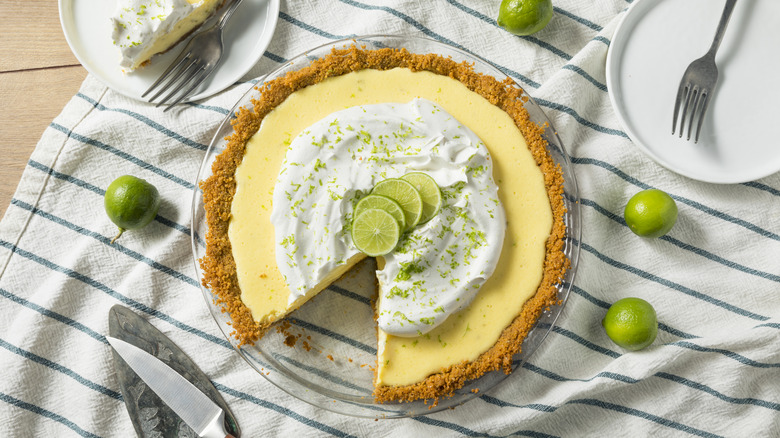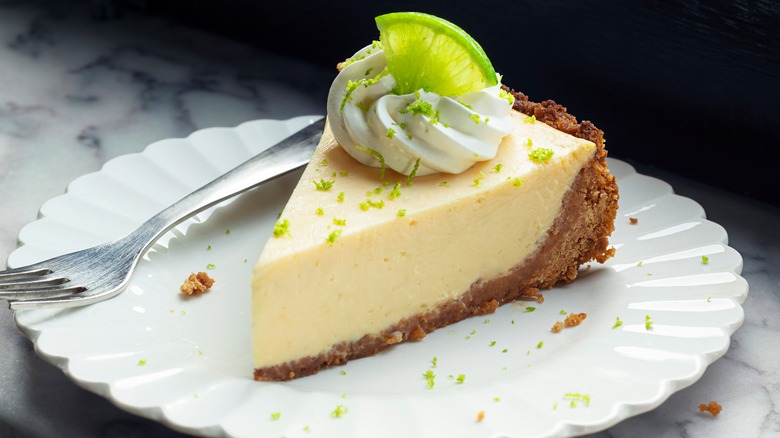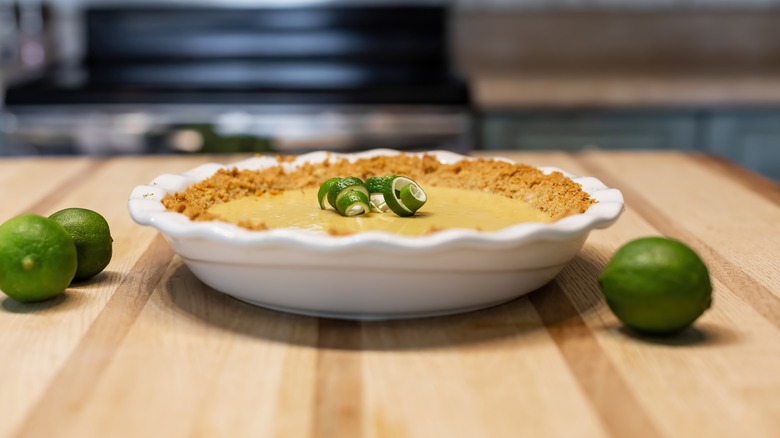The Tell-Tale Sign That Your Key Lime Pie Is Overbaked
Unlike other baked goods like cookies or cakes, pies (especially those with a custard filling like classic key lime pie) don't change dramatically in appearance until they are significantly overbaked. Pie filling also continues to cook and set after being removed from the oven due to residual heat. This makes it difficult to determine right away whether key lime pie needs more time in the oven. What looks slightly underbaked in the oven might actually be just right when it cools down.
The tell-tale sign that your key lime pie is overbaked is the lack of movement that occurs when you nudge the pie dish. If there is hardly any jiggling, and the edges of the filling are slightly raised and cracked, this means you left it in the oven for too long. Even if you followed this crucial step for ultra creamy key lime pie, overbaking would still cause the filling to have a more firm, curdled consistency instead of a soft and velvety one. What you actually want to see when you give your pie a shake is some jiggling in the middle and slightly set edges.
How to avoid overbaking key lime pie
Gently shaking your pie dish is a reliable way to check if your key lime pie is overbaked, however, it isn't a good idea to do this throughout the baking process. When you open the oven door over and over, the temperature drops and the oven has to keep reheating. This fluctuation causes uneven baking, leading to an inconsistent texture.
To avoid overbaking key lime pie, the best course of action is to keep the oven temperature at 200 degrees Fahrenheit. This is because key lime pie filling boils at 212 degrees Fahrenheit, and by setting the oven temperature lower than the boiling point, you minimize the risk of the filling overheating. Because of the lower oven temperature, it will take a longer time to bake, about an hour. For more accuracy, use a thermometer and take the pie out of the oven as soon as the filling hits 145 degrees Fahrenheit. This will ensure the pie doesn't turn out overbaked.
Choose your pie dish wisely
When you take key lime pie out of the oven at 145 degrees Fahrenheit or when the center is still jiggly, it's technically underdone. Carryover cooking will bring it up to 170 to 175 degrees Fahrenheit so it's fully set, and this gradual process is what ensures the best texture. Therefore, it's best to opt for a ceramic or glass pie dish when making the best key lime pie because the material excels at retaining heat compared to metal.
If you were to bake key lime pie in a metal pie dish instead, you could more easily end up with either undercooked or overcooked key lime pie. Metal pie dishes, being good conductors of heat, cause the crust to bake and brown more quickly. This could result in a crust that overcooks by the time the filling is ready. On the other hand, without enough residual heat to continue the cooking process outside the oven, a key lime pie baked in a metal pan would need to remain inside the oven longer, creating more risk for overbaking. Fortunately, this risk can be mitigated by choosing the right type of pie dish, along with knowing the signs of doneness and ideal temperature settings.


